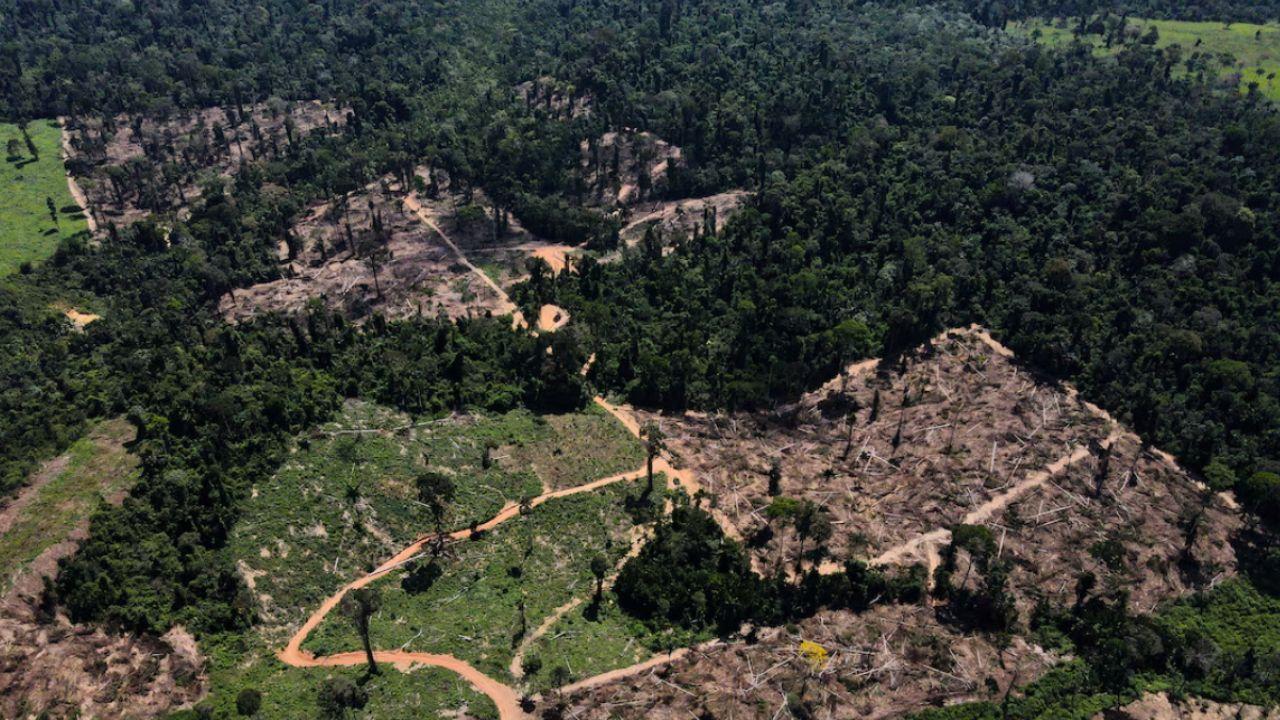
Post by : Priya
Photo:Reuters
In a historic move for environmental conservation, the Brazilian government has created a series of new wildlife protection zones deep within the Amazon Rainforest. The decision comes as part of Brazil’s broader efforts to fight deforestation, protect endangered species, and restore balance to one of the most important ecosystems on the planet.
This step has been welcomed by environmentalists, Indigenous communities, and international observers. It signals Brazil’s renewed commitment to saving the Amazon and securing its future for generations to come.
Why the Amazon Matters
The Amazon Rainforest covers around 5.5 million square kilometers and stretches across nine countries, with more than 60% located in Brazil. Often referred to as the “lungs of the Earth,” the Amazon produces about 20% of the world's oxygen and plays a vital role in absorbing harmful carbon dioxide from the atmosphere.
It is also home to over 10% of the world's known species, making it one of the richest areas of biodiversity on Earth. From jaguars to poison dart frogs, from giant river otters to rare orchids, the Amazon supports life in every form. Many of these species cannot survive anywhere else.
Yet, in recent decades, the rainforest has come under serious threat. Logging, mining, farming, and illegal land grabbing have destroyed large areas of the forest. Between 2001 and 2020, Brazil lost nearly 18 million hectares of tree cover in the Amazon region. This loss has affected both the wildlife and the Indigenous people who depend on the forest for their survival.
Details of the New Protection Zones
On July 21, 2025, Brazil’s Ministry of Environment and Climate Change announced the creation of five new wildlife protection zones, covering more than 2 million hectares of land across four Amazonian states: Amazonas, Pará, Acre, and Rondônia.
These zones will be classified as strict conservation units, meaning that activities such as logging, mining, and industrial farming will be completely banned. In addition to protecting forests, these zones will preserve rivers, wetlands, and other vital ecosystems.
Each zone has been carefully chosen based on scientific studies that identify regions with high biodiversity and endangered species. The government has partnered with local universities, environmental groups, and Indigenous communities to map out the most sensitive and threatened areas.
Key Areas and Wildlife Impact
The five new zones include the following:
These zones are not only rich in wildlife but also important for maintaining the water cycle, preventing floods, and cooling the regional climate. They serve as carbon sinks, which helps Brazil meet its international climate commitments.
Role of Indigenous Communities
A key highlight of the new initiative is the involvement of Indigenous communities in protecting and managing the land. Many of these areas overlap with or border Indigenous territories. Local leaders have long demanded more support from the government to stop illegal invasions and logging.
Now, under the new policy, Indigenous people will receive government support to act as forest guardians. They will be given training, tools, and financial assistance to monitor the land, report illegal activity, and manage eco-friendly projects.
Maria Antônia, a leader from the Kayapo community, said in a public statement, “For us, the forest is life. With protection, we can keep our traditions alive and ensure our children grow up in a healthy land.”
International and Environmental Reactions
The move has drawn strong praise from global environmental organizations. The World Wildlife Fund (WWF) called it “a bold and much-needed step to save the Amazon.” Greenpeace Brazil also welcomed the decision but warned that proper funding and enforcement are crucial for the plan’s success.
UN Secretary-General António Guterres issued a statement saying, “Protecting the Amazon is not just Brazil’s responsibility, it is a duty to humanity. We support this important step and urge other nations to follow Brazil’s lead.”
The United States, Germany, and Norway have already pledged financial support through the Amazon Fund, which helps Brazil carry out its forest conservation goals.
While the announcement is a positive move, experts warn that implementation will be the true test. Brazil has a long history of announcing conservation plans that fail due to weak enforcement, lack of funding, and political pressure from powerful agricultural and mining groups.
Key challenges include:
Environmentalists say that the government must stay committed over the long term and resist efforts to weaken protection laws under political pressure.










NBA Friday Recap: Powerhouse Wins for Miami, LA, Milwaukee, and Clippers
Miami, LA Lakers, Milwaukee, and Clippers triumphed in a thrilling NBA Friday, showcasing standout p

Doncic Shines with 49 Points in Lakers' 128-110 Victory over Timberwolves
Luka Doncic dazzles with 49 points as the Lakers secure a 128-110 win against the Timberwolves, show

Kings Triumph Over Jazz 105-104 with Last-Minute Sabonis Effort
The Sacramento Kings edged out the Utah Jazz 105-104, with Domantas Sabonis making the decisive shot

Argentina's Friendly Match Against India Delayed, New Date to be Announced
The friendly match between Argentina and India in Kochi has been postponed due to FIFA approval dela

Rohit and Kohli Conclude ODI Journeys in Australia with a Victory
Rohit Sharma and Virat Kohli bid adieu to Australian ODIs with a final win, forming a 168-run partne

George Russell's Wrestling Mask Antics at Mexican Grand Prix
George Russell donned a wrestling mask to enjoy the Mexican Grand Prix from the stands, providing a